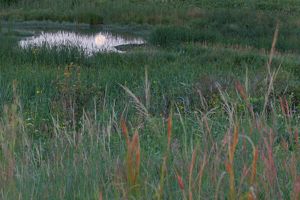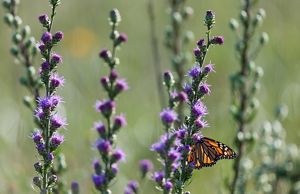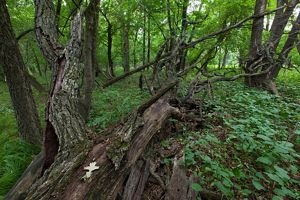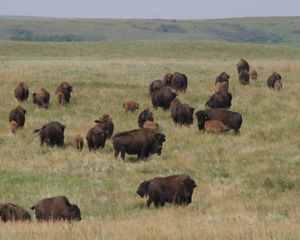Description
Why You Should Visit
Pigeon Point's high diversity of wetland habitats and plant life is noteworthy. At least 15 rare plants are harbored in fen and wetland thicket habitats. The preserve also has one of the best developed, spring-fed streams in the Sheyenne River Valley.
The south end of the preserve consists of upland sandhill habitat much of which was formerly farmed. TNC is currently restoring native tallgrass prairie to these old farm fields. The less disturbed northern end consists of slopes and floodplains of the Sheyenne River covered by riparian and wetland forests. Unusual groundwater-fed wetlands, called fens, are scattered in this area, along the slopes dropping off to the river floodplain.
Location
Pigeon Point is located in a straight line eight miles southeast of Sheldon, North Dakota; or 14 miles east-northeast of Lisbon, North Dakota. It is situated in the northwest portion of the Sheyenne Delta landscape along the south bank of the Sheyenne River.
Plan Your Visit
For more information on visiting this and other North Dakota preserves, check out our Preserve Visitation Guidelines.
Size
TNC's ownership at the Pigeon Point consists of 571 acres. It is part of the larger Sheyenne Delta landscape, nearly 236,000 acres, in a mix of private and public ownership.
Why TNC Selected This Site
The high quality fen and shrub meadow communities and their associated rare plants are what initially attracted TNC to Pigeon Point. TNC purchased 861 acres in 1994.
What the TNC Has Done/Is Doing
In the late 1990's, 289 acres of excess cropland were sold, bringing the current preserve size to 572 acres. Since 1994 stewardship activities have included controlling the invasive leafy spurge, and conducting prescribed burns to reinvigorate the remnant prairie patches and woodland communities. The most ambitious undertaking has been the restoration of native prairie on a 200-acre farm field. Native seed restoration began in 2000 and Pigeon Point is already showing positive signs of recovery.









